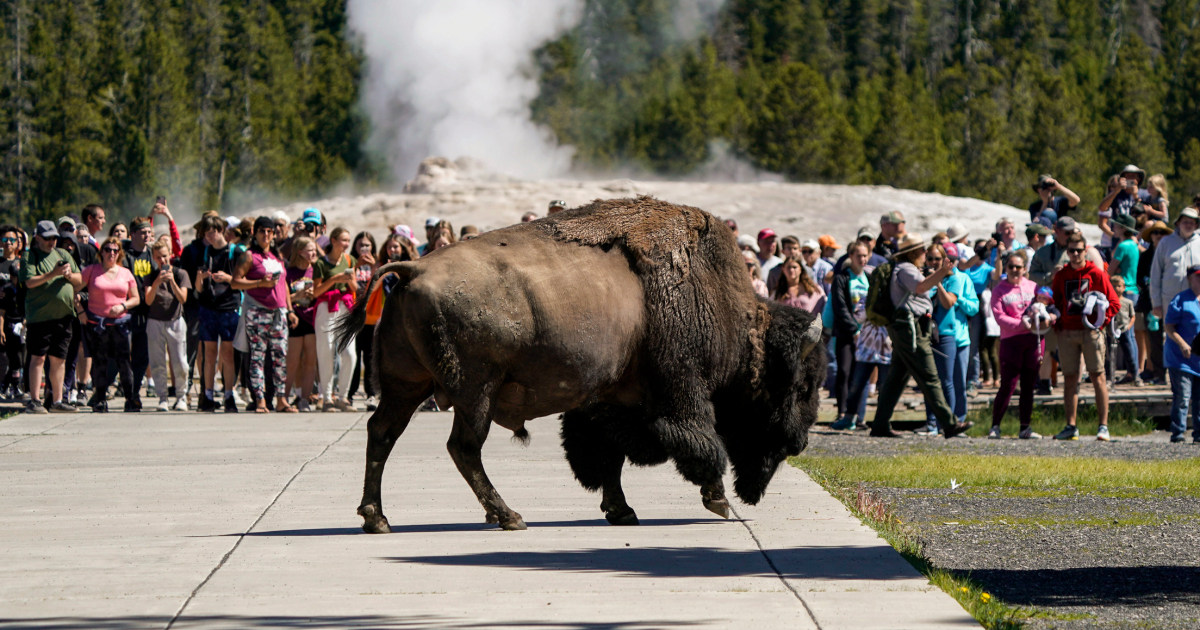This post may refer to COVID-19
To access official information about the coronavirus, access CDC - Centers for Disease Control and Prevention.

www.nbcnews.com
Opinion | Yellowstone bison goring videos show a dangerous American tourist failing
Yellowstone bison goring viral videos highlight America's tourism problem as national park visitors explode post Covid
Culture & Entertainment
By Dennis Jorgensen, bison program manager for World Wildlife Fund's U.S. Northern Great Plains Program
Bison are oh-so-fluffy, ambling, plant-eating animals that have long captured the world’s attention because of their majestic dignity. Increasingly, however, they also make headlines because of dangerous run-ins with tourists. Already this summer we’ve seen two high-profile bison gorings at Yellowstone, both caught on video.
As a resident Montanan, professional bison conservationist and neighbor of nearby Yellowstone National Park, I can understand why people feel the urge to touch these massive mammals. They are a sight to behold — both undeniably cute and seemingly oblivious to our presence. However, as a biologist, I assure you that they are keenly aware of our approach. They can and will respond with lightning-fast reflexes if we get too close.
Indulge me for a minute. The average NFL lineman weighs around 310 pounds, and the league’s fastest player has been clocked at about 23 miles per hour. In comparison, a bison can weigh more than 2,000 pounds and run more than 35 miles per hour. But unlike in the NFL, there isn’t a referee to blow the whistle when a bison feels threatened. They charge until the threat has been diminished.
Recent and ongoing injuries from bison gorings in parks and protected areas are tragedies for both people and bison. Bison aren’t out to get tourists, but with visitation in Yellowstone and other parks on the rise, wildlife is feeling more pressure than ever. Approximately 4.86 million people visited Yellowstone in 2021, its busiest year to date. American travel has exploded recently, as families cooped up during the pandemic embrace their summer vacations. But that (understandable) wanderlust comes with a cost. More broadly, more than 55% of Earth’s land is shared by people and wildlife. As our footprint extends even farther into wild spaces, encounters between people and wildlife increase, often leading to instances of human-wildlife conflict.
The broader problem may be that many of us no longer know how to relate to nature, because we see ourselves as being outside of it. People are so used to experiencing wildlife through the lens of social media or a wildlife series that we’ve come to see ourselves solely as spectators rather than participants when we enter actual wild places. However, let me be clear: When we visit parks with free-roaming wild animals, we have entered a wild area. And we have no special rights or protections, other than our own common sense.
When you choose to not respect a bison, bear or moose’s space to get that selfie for social media, it is not only disrespectful — it’s dangerous. Humans may have evolved to think themselves apex predators, but they are in fact quite vulnerable.
Read and see here:
























































